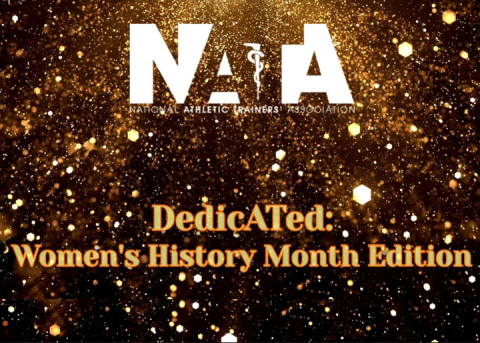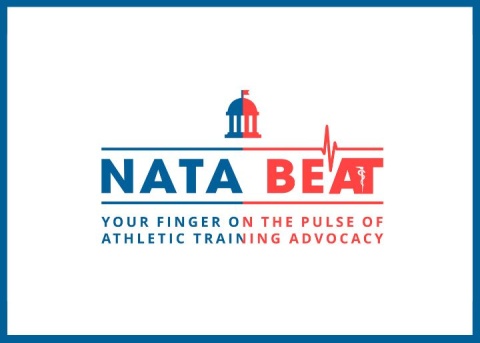
In the June NATA News, the Health Care in Action feature highlighted how to build a connection with a journalist for better storytelling. Athletic trainers have a wealth of knowledge and experiences of interest to the general public. Having a great story to tell is one thing – how you actually get that story out is entirely different.
Here are five ways to ensure you’re delivering your story the best way possible:
1. Prepare for the spotlight. Train to best interface with the media and the public. Media training is best conducted by a PR/media relations professional and should encompass traditional and nontraditional media engagement.
2. Build your informational and asset toolkit. Create a toolkit of facts, figures, research and quotes that can be easily and quickly referenced and deployed to press within 24 to 48 hours. Track media coverage to identify trends and hot topics. Tap into the resources at the NATA office by visiting the Health Care in Action webpage.
3. Establish and grow media relationships. Identify key press and reporters in your media market that cover your areas of interest. Consider this group your “VIP” press. Research and get to know what they like to cover. When pitching stories, customize your pitch with the intended reporter/outlet in mind. The more targeted the pitch, the more likely it is to get covered. Build a relationship with key press by providing a steady stream of intentional and thoughtful content. Don’t spam a reporter, but do leverage opportunities to position yourself as a valuable resource.
4. Engage on social media. Although press releases are still a common way for press to get information, more than 60 percent of journalists use Twitter as a resource to find stories and receive pitches. Follow your “VIP” press, and engage when appropriate. Be ready to engage in the conversation if you can provide thoughtful insight that positions athletic trainers as undisputed health care professionals.
5. Provide your professional opinion. If you have a passionate or strong evidenced-based argument about a topic, an op-ed (or opinion-editorial) may be the way to go. Op-ed is an article – usually written by a guest contributor who isn’t affiliated with the publication – that expresses the opinion of the author. You would pen the article and submit it to the publication. The first step is to identify the outlet to which you want to contribute. Research their op-ed guidelines prior to writing or submitting an editorial. The topics almost always focus on a public issue or news story. It can be a powerful vehicle for communicating your point of view or advocating for change. However, remember your goal is to position athletic trainers as undisputed health care professionals. Therefore, be sure your topic and content align with this goal. The NATA PR team has guidelines and examples that can be shared.
The Journalist’s Side
It is also vital to know more about the journalist’s side to understand just how precise you need to be. Journalists are getting pitched upward of 100 pitches per day, and as news outlets close or consolidate, that number goes up significantly. You add to that the fairly recent practice of pitching via social media, and that pitch number grows exponentially. That means when you get a reporter’s attention, you need to provide them with a story that has all the right ingredients.
Here are the characteristics a journalist will typically look for to gauge if a story is worth pursuing.
- Timing: Is it current? Things that are over a week old are no longer news.
- Significant: Are a large or significant number of people affected by the news? The more people involved, the more likely this will be seen as news.
- Proximity: Does it directly affect the readers? How far away is the news happening from the people who will be affected? The closer to home, the more newsworthy it is.
- Prominence: Is the person/people involved prominent? Local officials, organizations or heroes can be considered prominent.
- Emotion: Does the story evoke a strong emotion? News doesn’t have to do this, but human interest stories do. Assets (pictures, videos, etc.) are a great way to help evoke emotion. Details and quotes from an event, experience, etc. can help assert the emotion.
- Inform: Does it inform or educate? It’s not an avenue for advertising. Research is a great resource to help craft a story that shows athletic trainers’ expertise through the story that the numbers tell.
- Novelty: Is it an unusual story? Is it the first or biggest of something? World records are often used as a novel way to create news.
- Conflict: Is there conflict or a problem being addressed? If the news is only good, it likely won’t get covered, unless it’s a novelty or evokes emotion (human interest).
- Facts: Can it be backed up by research or facts and figures? The easier it is for a press person to do their job well and efficiently, the better.
- Brand: Although not a formal characteristic for a story, what you present to the media should position the profession in a positive light and reaffirm the athletic trainer’s role as an undisputed health care profession. Avoid outdated clichés or questionable interactions that might negatively impact the brand of the profession. When in doubt, run it by your NATA PR team at PR@nata.org; they are happy to help!





